ChatGPT:
Caernarfon is a historic town in northwest Wales, located on the eastern shore of the Menai Strait, which separates the Isle of Anglesey from the mainland. It is most famous for Caernarfon Castle, a majestic fortress built by King Edward I in the late 13th century as part of his campaign to conquer Wales. The castle is one of the best-preserved medieval fortresses in Europe and is a UNESCO World Heritage Site.
The town itself has a rich cultural heritage, with a predominantly Welsh-speaking population, giving it a strong sense of local identity. The narrow, winding streets of the old town are lined with traditional stone buildings, quaint shops, and cozy pubs. Caernarfon is also known for its scenic waterfront, with views across the Menai Strait and towards the mountains of Snowdonia.
Caernarfon has played an important role in Welsh history and culture. It was the site where Prince Charles was invested as Prince of Wales in 1969, continuing a tradition that dates back to the medieval period. The town’s atmosphere reflects a blend of its historical significance and modern-day vibrancy, making it a popular destination for visitors interested in Welsh history, culture, and natural beauty.
Beyond the castle, visitors can explore the surrounding region, including the nearby Snowdonia National Park, offering outdoor activities such as hiking, climbing, and exploring the rugged Welsh landscape.
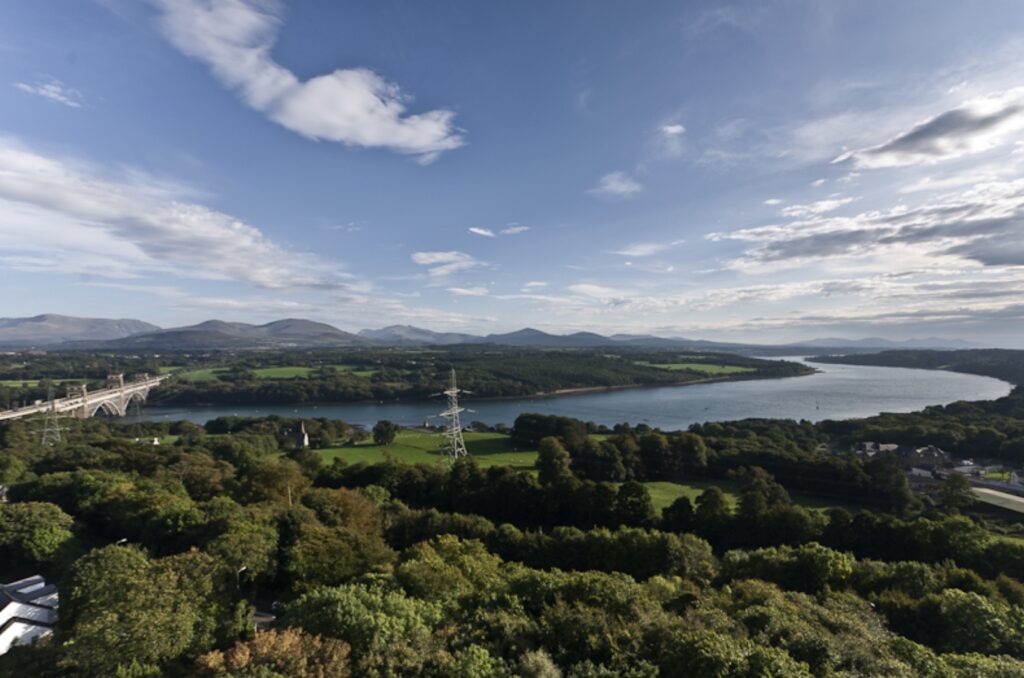
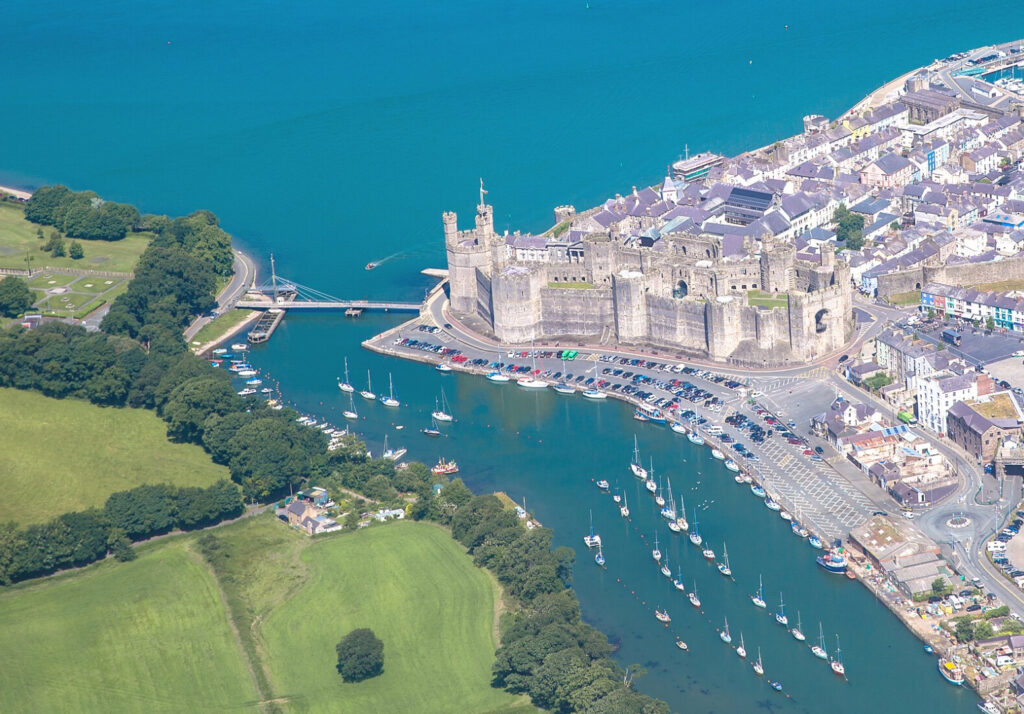
Caernarfon’s origins and development are deeply rooted in the history of Wales, with influences from Roman, Norman, and medieval periods shaping its character.
Roman Origins:
The area around Caernarfon was first settled during the Roman occupation of Britain. The Romans established a fort called Segontium around AD 77–78 on a hill just outside the present-day town. Segontium was built to control the local Celtic tribe, the Ordovices, and to protect the Roman Empire’s interests in the region. The fort remained an important military base until the Roman withdrawal from Britain in the early 5th century.
Early Medieval Period:
After the departure of the Romans, the site became part of the Kingdom of Gwynedd, an early Welsh kingdom. The area retained its strategic importance due to its location near the Menai Strait and its proximity to the mountains of Snowdonia. It was during this time that Caernarfon became associated with Welsh royalty, particularly during the reign of Llywelyn the Great in the 13th century.
Norman and Plantagenet Influence:
The town of Caernarfon as we know it today began to take shape during the Norman period. The Normans, after their conquest of England in 1066, sought to extend their control into Wales. However, it was not until the late 13th century that Caernarfon underwent significant development under the rule of King Edward I of England. Following his conquest of Wales, Edward embarked on an ambitious project to build a series of castles to consolidate his power over the Welsh.
Construction of Caernarfon Castle:
In 1283, Edward I began the construction of Caernarfon Castle, which was designed to be both a military stronghold and a symbol of English authority in Wales. The castle was built on the site of an earlier Norman motte-and-bailey structure, and its design was inspired by the imperial Roman architecture Edward had seen during his campaigns in France and Italy. The walls of the castle and the town were built simultaneously, forming a formidable defensive complex. Caernarfon Castle’s design is notable for its polygonal towers and the use of colored bands of stone, which were intended to evoke the appearance of the walls of Constantinople.
Medieval and Tudor Period:
Caernarfon quickly grew into an important administrative center for the English crown in Wales. The town was granted a charter in 1284, which allowed it to hold markets and fairs, fostering economic development. During this period, Caernarfon became a focal point for the English administration in North Wales, and the castle was used as a royal residence and a seat of government.
In 1284, Edward I’s son, the future Edward II, was born at Caernarfon Castle, and in 1301, he was invested as the first English Prince of Wales, a tradition that has continued to this day. This event marked the beginning of Caernarfon’s association with the title of the Prince of Wales.
Decline and Revival:
After the Tudor dynasty came to power in the 16th century, the strategic importance of Caernarfon Castle diminished, and the town’s prominence declined. The castle fell into disrepair, and the town became a quiet backwater.
However, in the 19th century, Caernarfon experienced a revival due to the Industrial Revolution. The expansion of slate quarrying in the nearby mountains of Snowdonia brought economic prosperity to the town, which became an important port for the export of slate. This period also saw the growth of the town’s population and infrastructure, with new buildings and roads constructed to accommodate the booming slate industry.
Modern Era:
In the 20th century, Caernarfon’s historical significance was recognized, and efforts were made to preserve its medieval heritage. The castle was restored and became a popular tourist attraction. In 1969, Caernarfon Castle was once again thrust into the spotlight when Prince Charles was invested as Prince of Wales in a grand ceremony held within its walls.
Today, Caernarfon is a thriving town that blends its rich history with modern amenities. It remains a center of Welsh culture, with a strong Welsh-speaking community, and continues to attract visitors from around the world who are drawn to its historic castle, scenic location, and cultural significance.
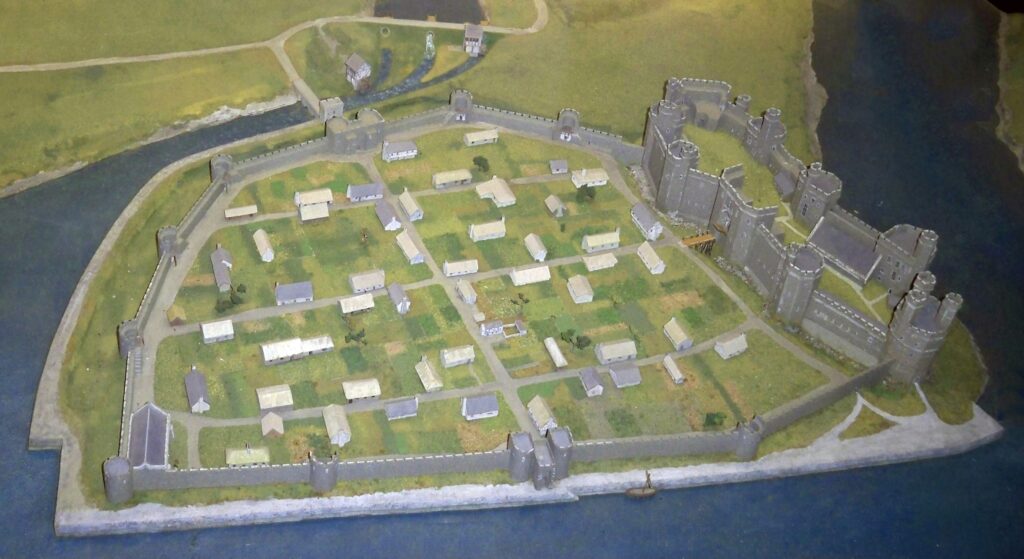
Caernarfon is home to several historical monuments and tourist attractions, many of which are linked to its rich history. Here’s a list of key sites along with their dates of origin or significance:
1. Caernarfon Castle (1283)
- Date: Began construction in 1283.
- Significance: A UNESCO World Heritage Site, this castle was built by King Edward I as part of his campaign to conquer Wales. It is known for its polygonal towers and impressive walls, symbolizing English dominance over Wales.
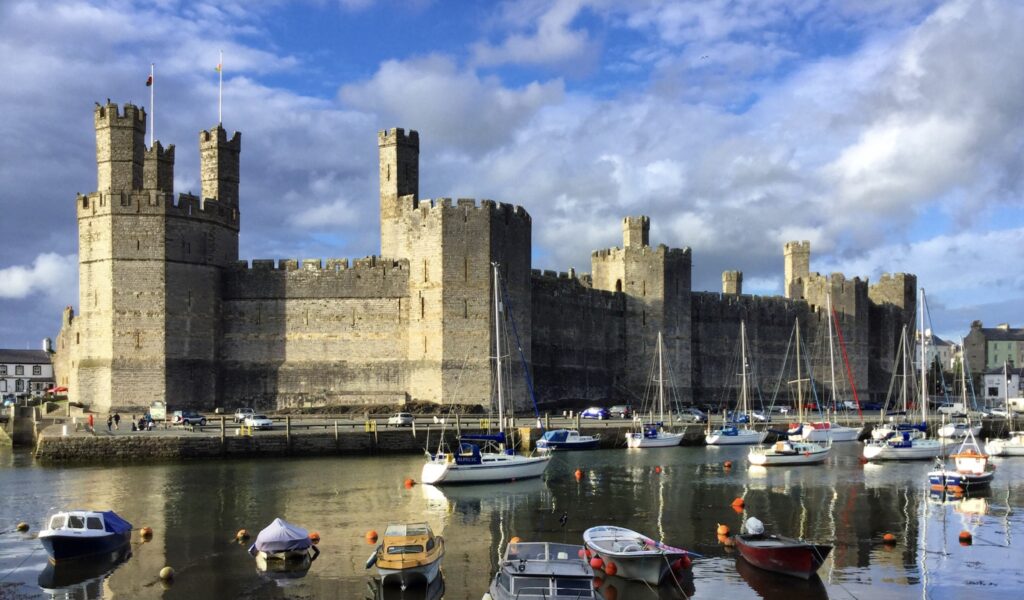
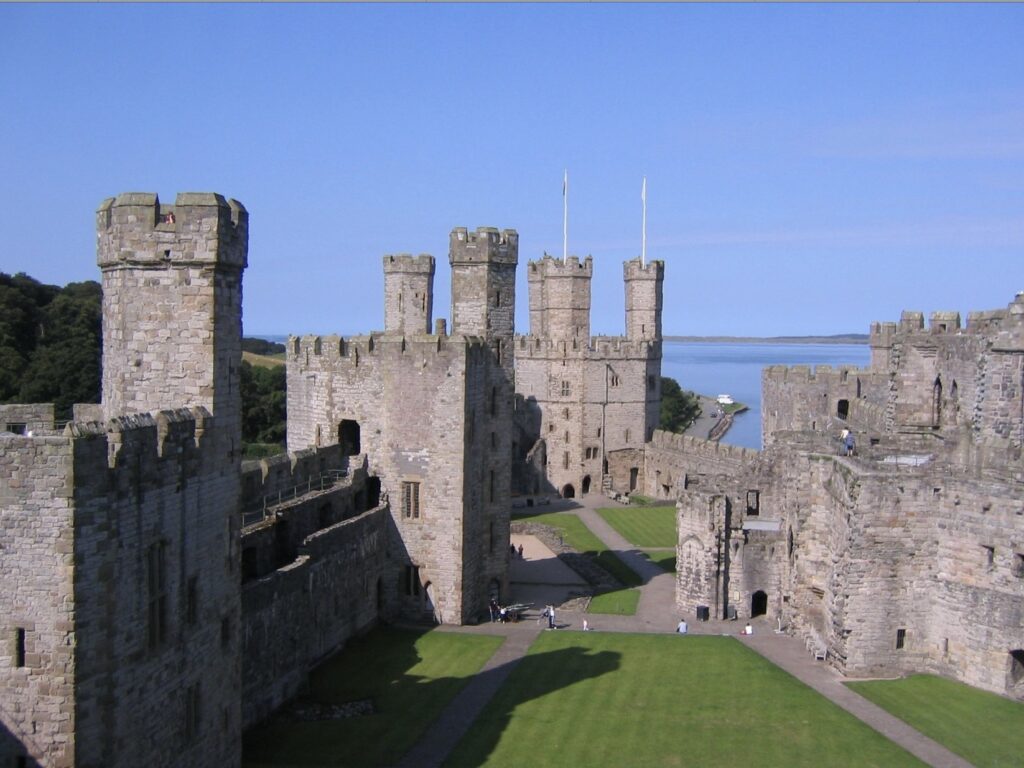
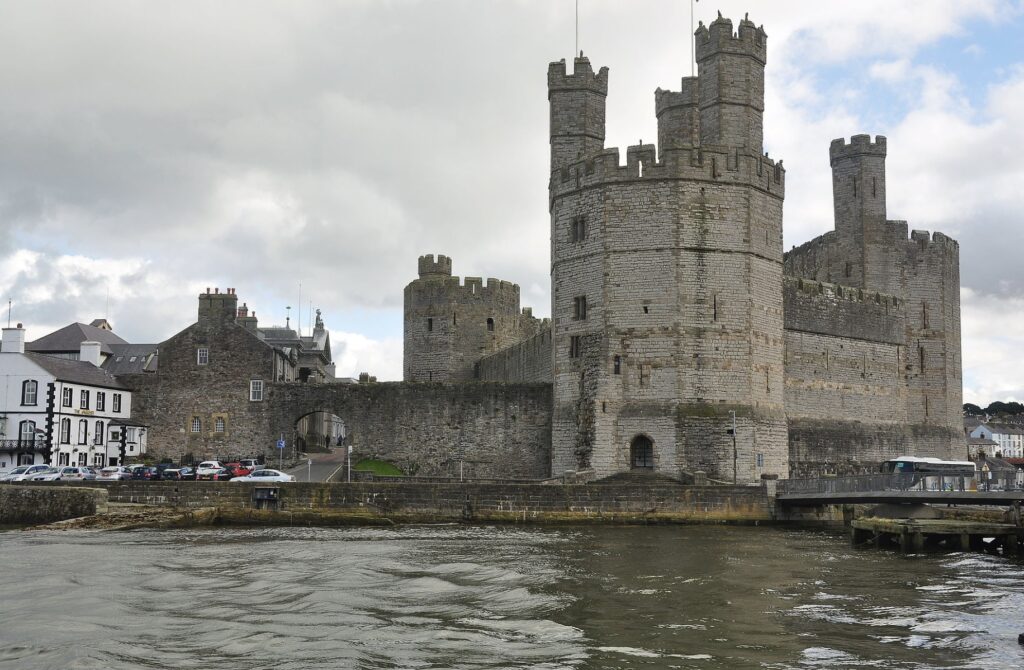
2. Caernarfon Town Walls (1283-1292)
- Date: Constructed between 1283 and 1292.
- Significance: These medieval walls were built alongside the castle to protect the town from attack. They are one of the best-preserved examples of medieval town walls in Britain.
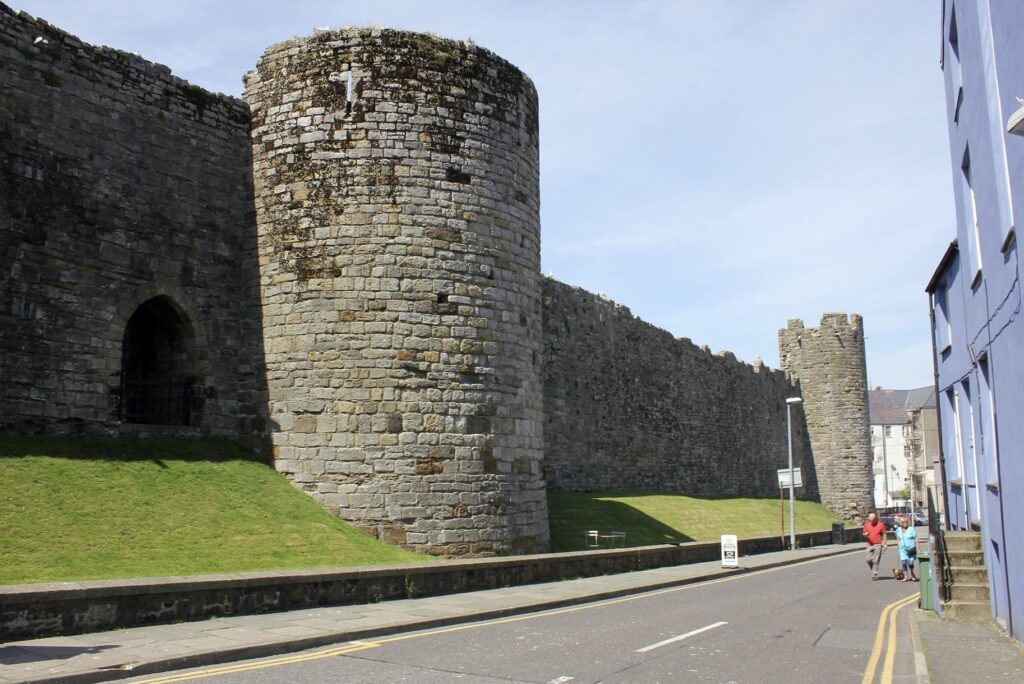
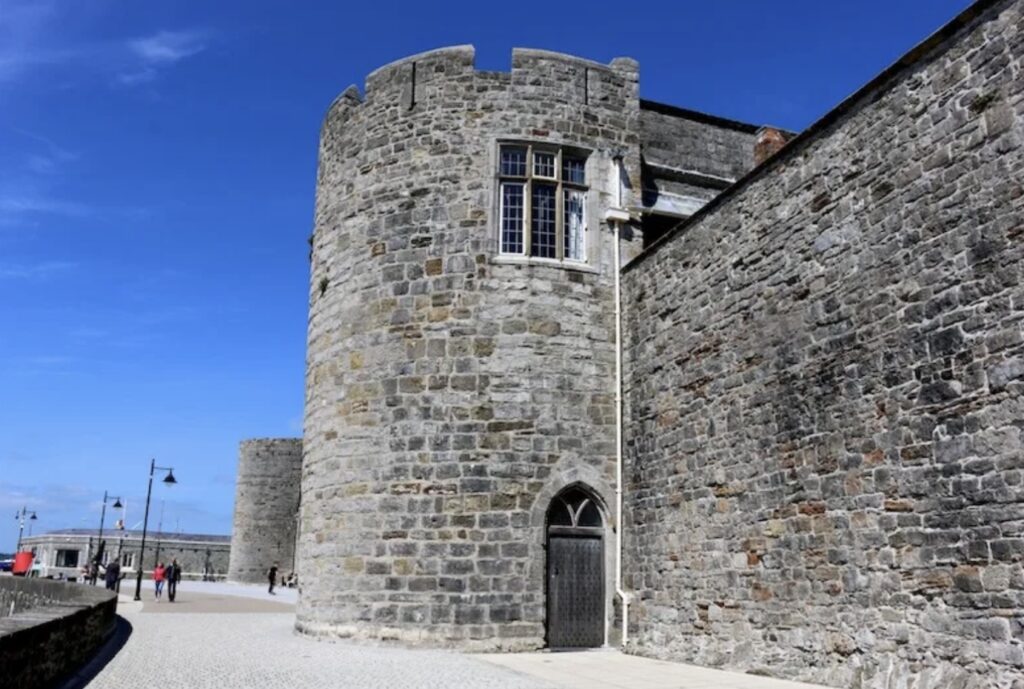
3. Segontium Roman Fort (AD 77–78)
- Date: Established around AD 77–78.
- Significance: This Roman fort was built to control the local Celtic tribes and protect the Roman Empire’s interests in North Wales. The remains of the fort provide insight into the Roman military presence in the region.
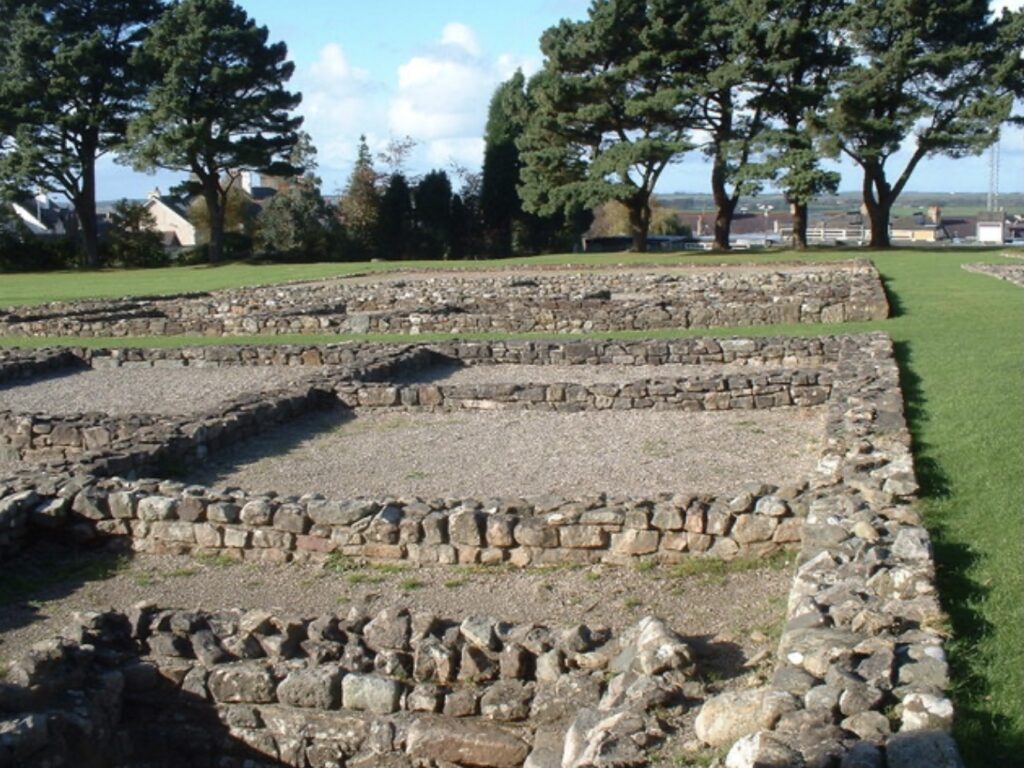
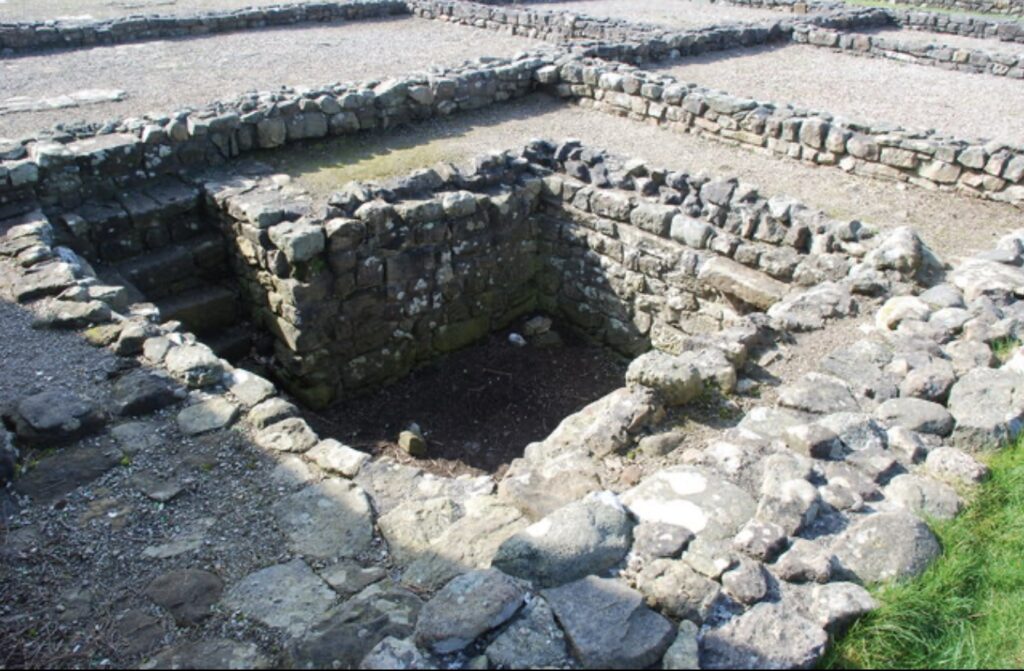
4. Church of St. Peblig (14th Century)
- Date: The current structure dates to the 14th century, though there has been a church on the site since the early medieval period.
- Significance: This church is dedicated to St. Peblig, the son of the Roman Emperor Magnus Maximus, and stands near the Segontium Roman Fort. It is an important religious site with connections to both Roman and early Christian history in Wales.
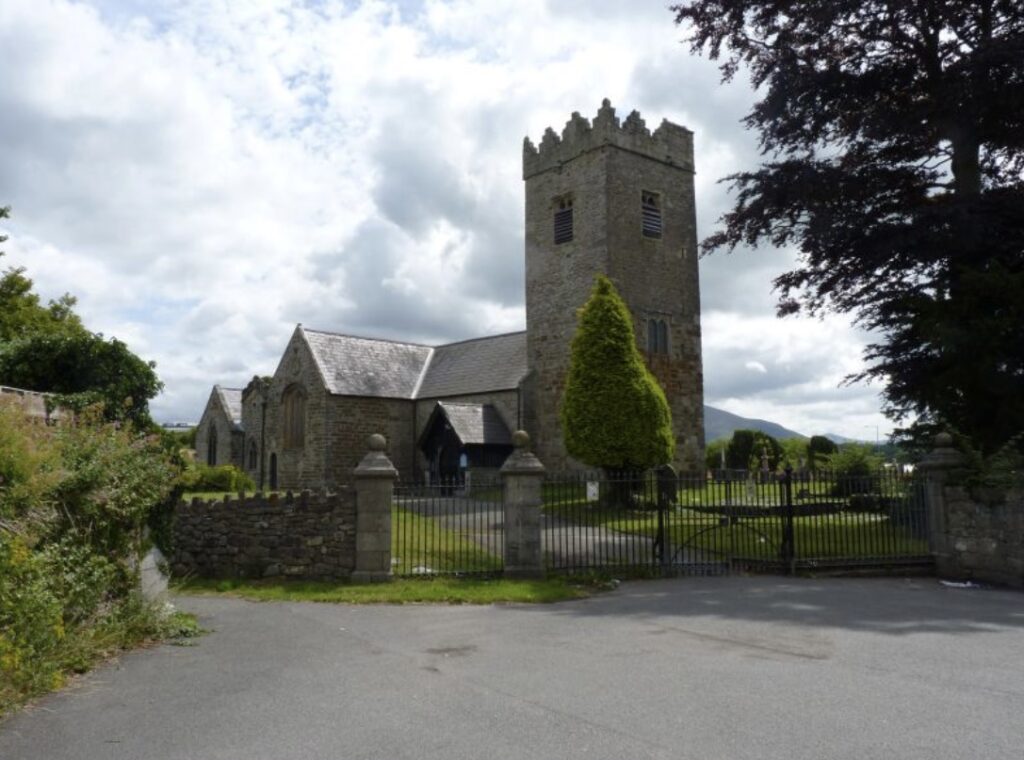
5. The Black Boy Inn (1522)
- Date: Established in 1522.
- Significance: One of the oldest inns in Wales, The Black Boy Inn is a historic pub that has been serving patrons for centuries. It reflects the town’s long-standing tradition of hospitality.
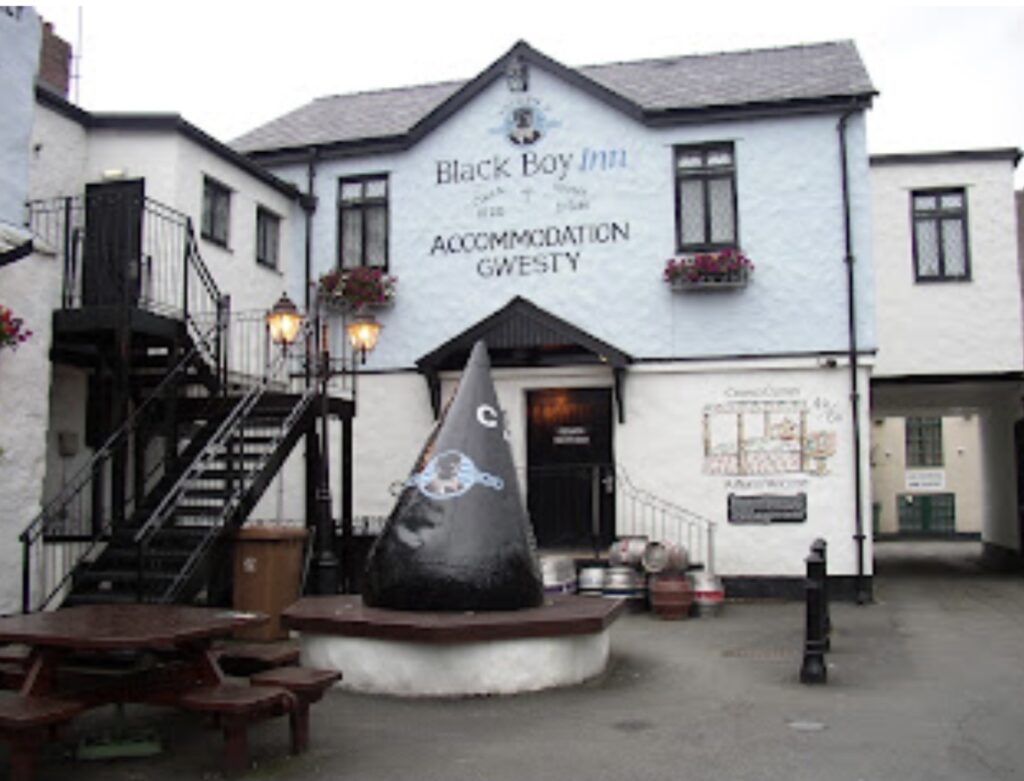
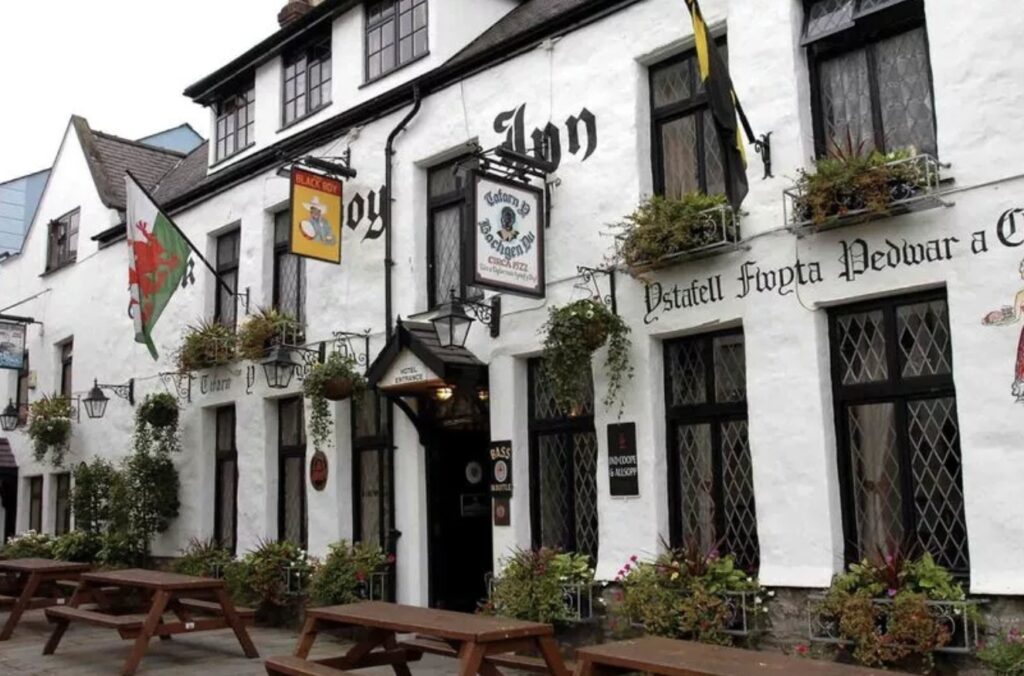
6. The Royal Welsh Yacht Club (1847)
- Date: Founded in 1847.
- Significance: Located in the harbor area, this yacht club is one of the oldest in Wales and is housed in a historic building that once served as the town’s market hall.
7. Caernarfon Railway Station (Caernarfon terminus of the Welsh Highland Railway)
- Date: The original station opened in 1867; the current station building opened in 1997.
- Significance: The station is the terminus of the Welsh Highland Railway, a scenic heritage railway that runs through Snowdonia. It is popular with tourists and railway enthusiasts.
8. Caernarfon Harbour and Slate Quay (19th Century)
- Date: Developed mainly in the 19th century.
- Significance: The harbor and quay were crucial for the export of slate during the Industrial Revolution. Today, they offer picturesque views and are central to the town’s maritime heritage.
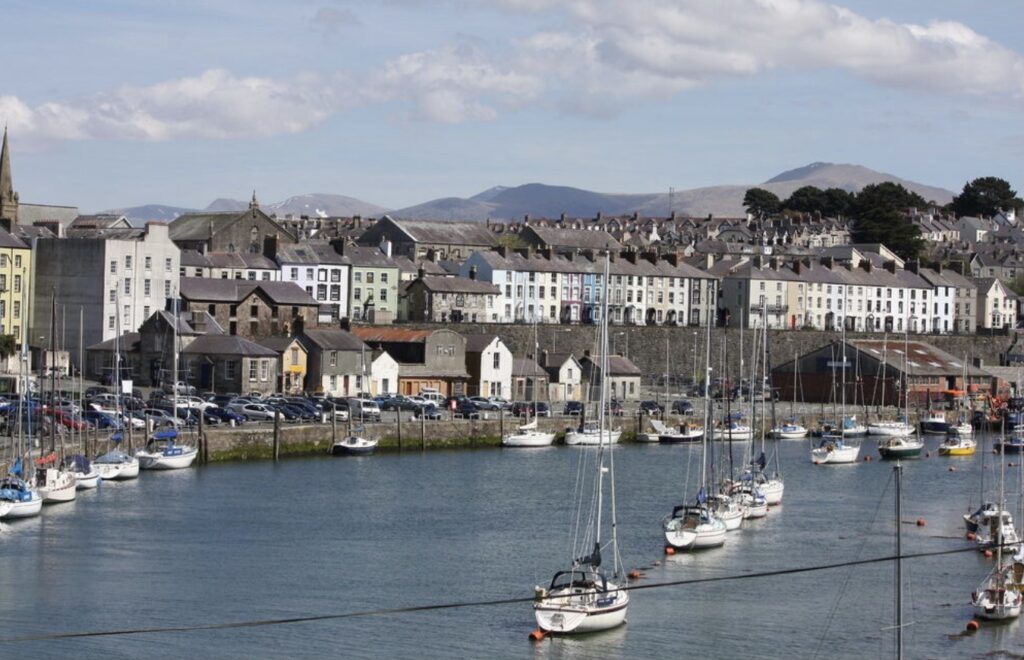
9. Caernarfon Market Hall (1833)
- Date: Built in 1833.
- Significance: This historic building, once the hub of trade and commerce in the town, now houses shops and businesses. It reflects Caernarfon’s economic history.
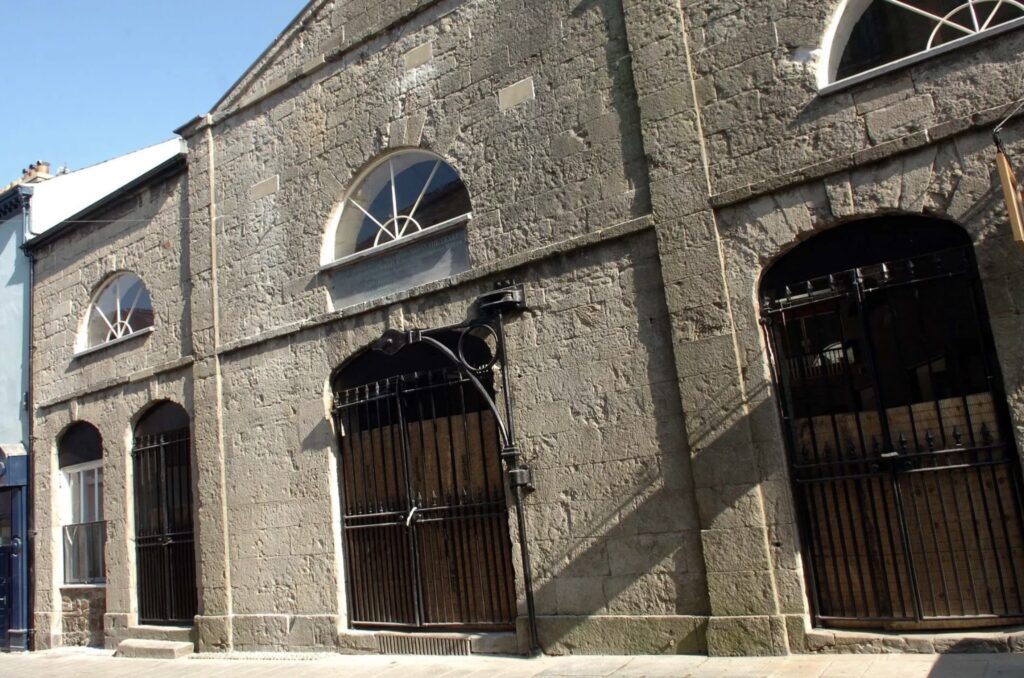
10. Victoria Dock (1860s)
- Date: Constructed in the 1860s.
- Significance: Victoria Dock was part of the town’s expansion during the slate boom and is now a modern marina, blending the town’s maritime history with contemporary leisure activities.
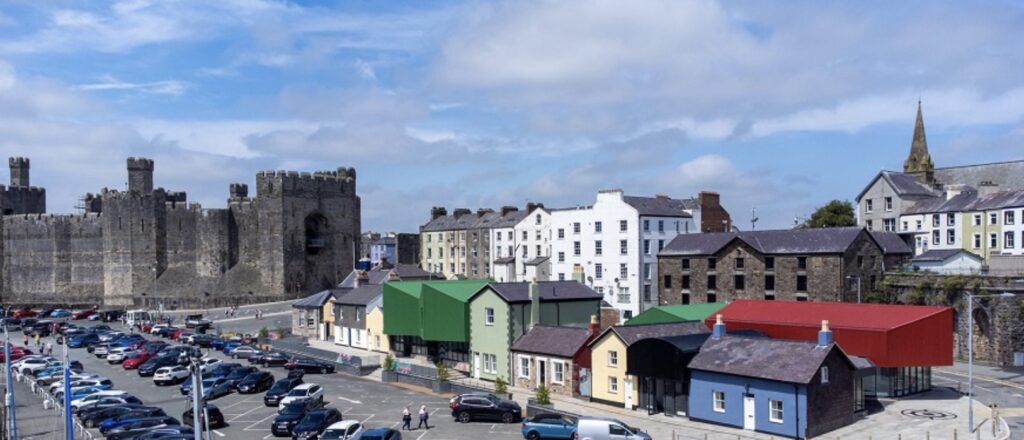
11. Doc Fictoria (1990s)
- Date: Developed in the 1990s.
- Significance: This modern development includes a marina, shops, restaurants, and cultural venues, adding a contemporary dimension to Caernarfon’s tourist attractions while being integrated into the town’s historic environment.
These monuments and attractions together offer a glimpse into Caernarfon’s long and varied history, from Roman times through to the modern era, making the town a rich destination for historical tourism.
Here’s an one-day itinerary for visiting:
Morning:
- 9:00 AM – Breakfast at The Black Boy Inn
- Start your day with a traditional Welsh breakfast at The Black Boy Inn. Enjoy local specialties like Welsh sausages, laverbread, and eggs in this historic setting.
- 10:00 AM – Explore Caernarfon Castle
- Spend your morning exploring Caernarfon Castle. Walk the walls, visit the Eagle Tower, and take in the history of this iconic fortress. Don’t miss the interactive exhibits and panoramic views of the Menai Strait.
- 12:00 PM – Walk Along Caernarfon Town Walls
- After the castle, take a leisurely stroll along the Caernarfon Town Walls to get a different perspective of the town.
Afternoon:
- 1:00 PM – Lunch at Osteria
- Enjoy a delicious lunch at Osteria. Try the Welsh lamb or locally sourced seafood, blending Italian and Welsh culinary traditions. For a more traditional meal, opt for Welsh rarebit or cawl.
- 2:30 PM – Visit Segontium Roman Fort
- Explore the remains of Segontium Roman Fort. Discover the history of the Roman occupation in Wales and visit the small museum with its fascinating artifacts.
- 3:30 PM – Tea and Cake at Scoops
- Take a relaxing break at Scoops for tea and a slice of Bara Brith or a scone with clotted cream and jam. This will give you some time to rest before continuing your exploration.
- 4:30 PM – Stroll Along the Waterfront and Victoria Dock
- Head to the Caernarfon Waterfront and enjoy a leisurely walk along Victoria Dock. Take in the views, watch the boats, and perhaps browse the local shops.
Evening:
- 6:00 PM – Explore Caernarfon’s Old Town
- Spend some time wandering through the narrow streets of Caernarfon’s old town. Visit local shops, and perhaps pick up some souvenirs, or simply soak in the atmosphere of this historic town.
- 7:30 PM – Dinner at The Gunroom Restaurant
- End your day with a delightful dinner at The Gunroom Restaurant in Plas Dinas Country House. Enjoy a fine dining experience featuring locally sourced Welsh ingredients such as fresh fish, Welsh beef, or lamb, paired with excellent wines.
- 9:30 PM – Evening Walk and Views of Caernarfon Castle
- After dinner, take an evening walk back to the town center. The castle, illuminated at night, offers a beautiful and serene view to conclude your day in Caernarfon.
This itinerary ensures you have a comfortable gap between your tea time and dinner, allowing you to enjoy each part of your day at a relaxed pace.

